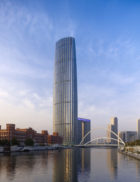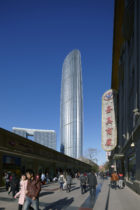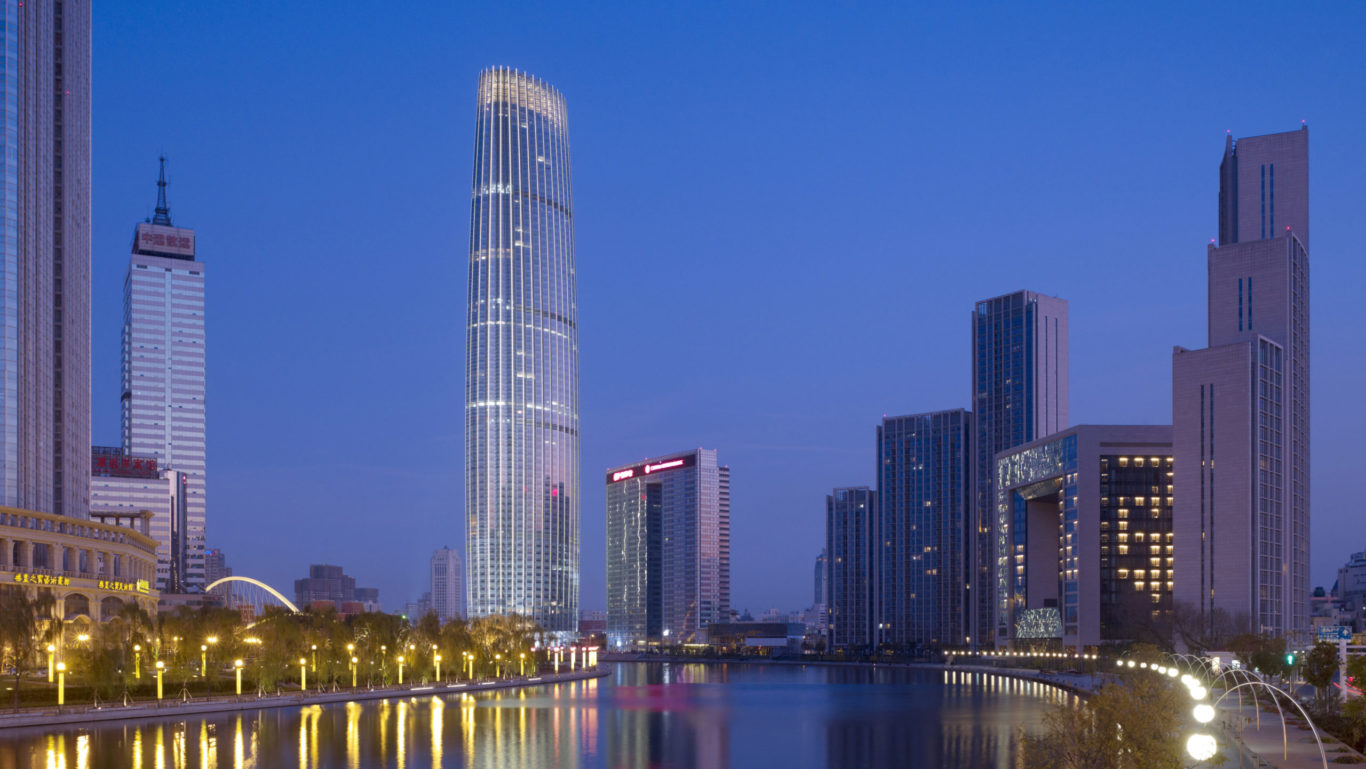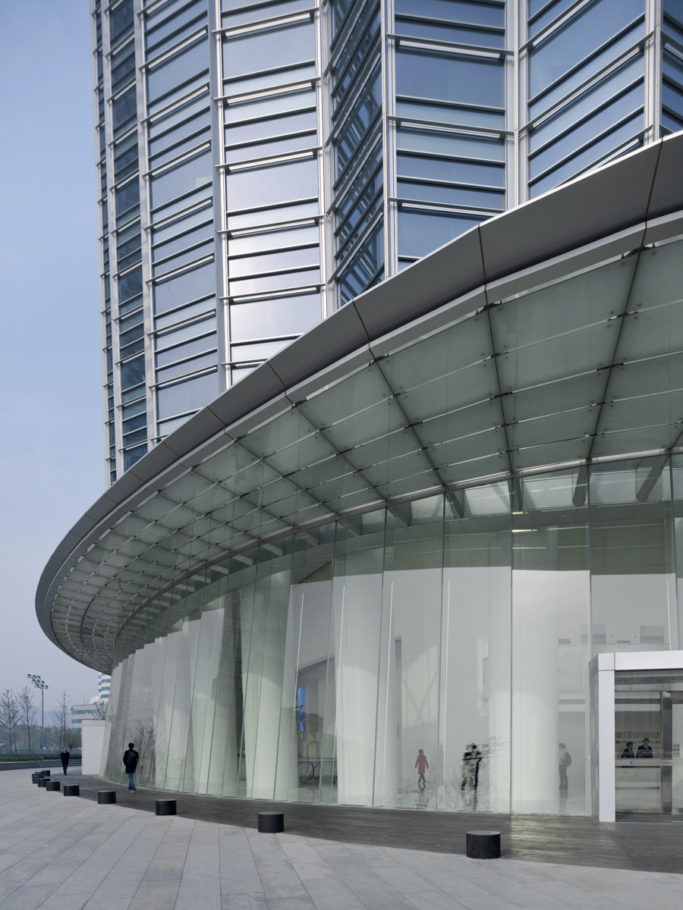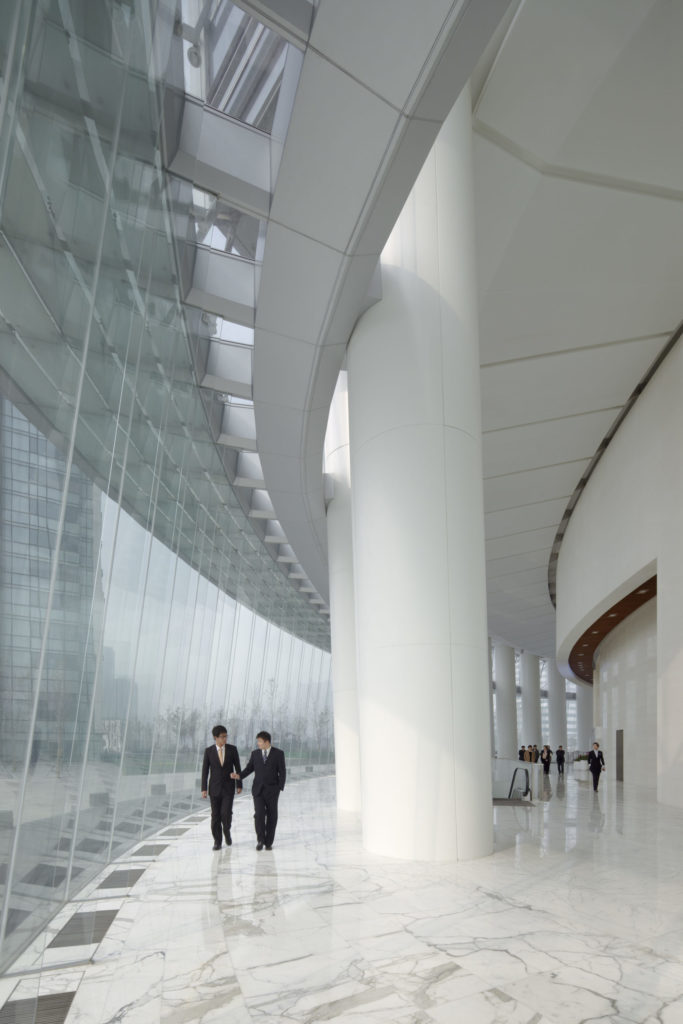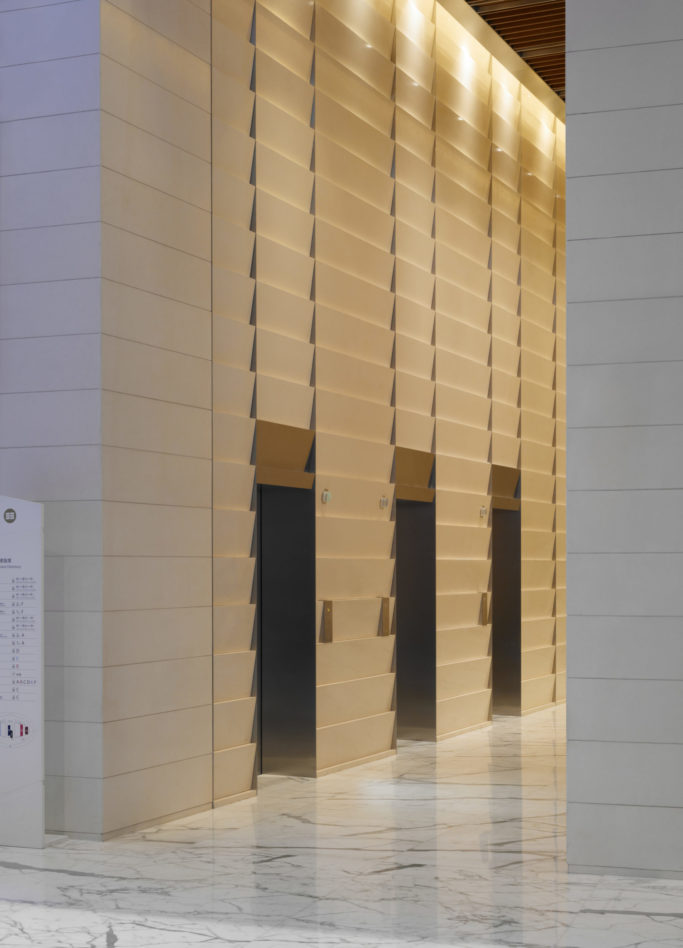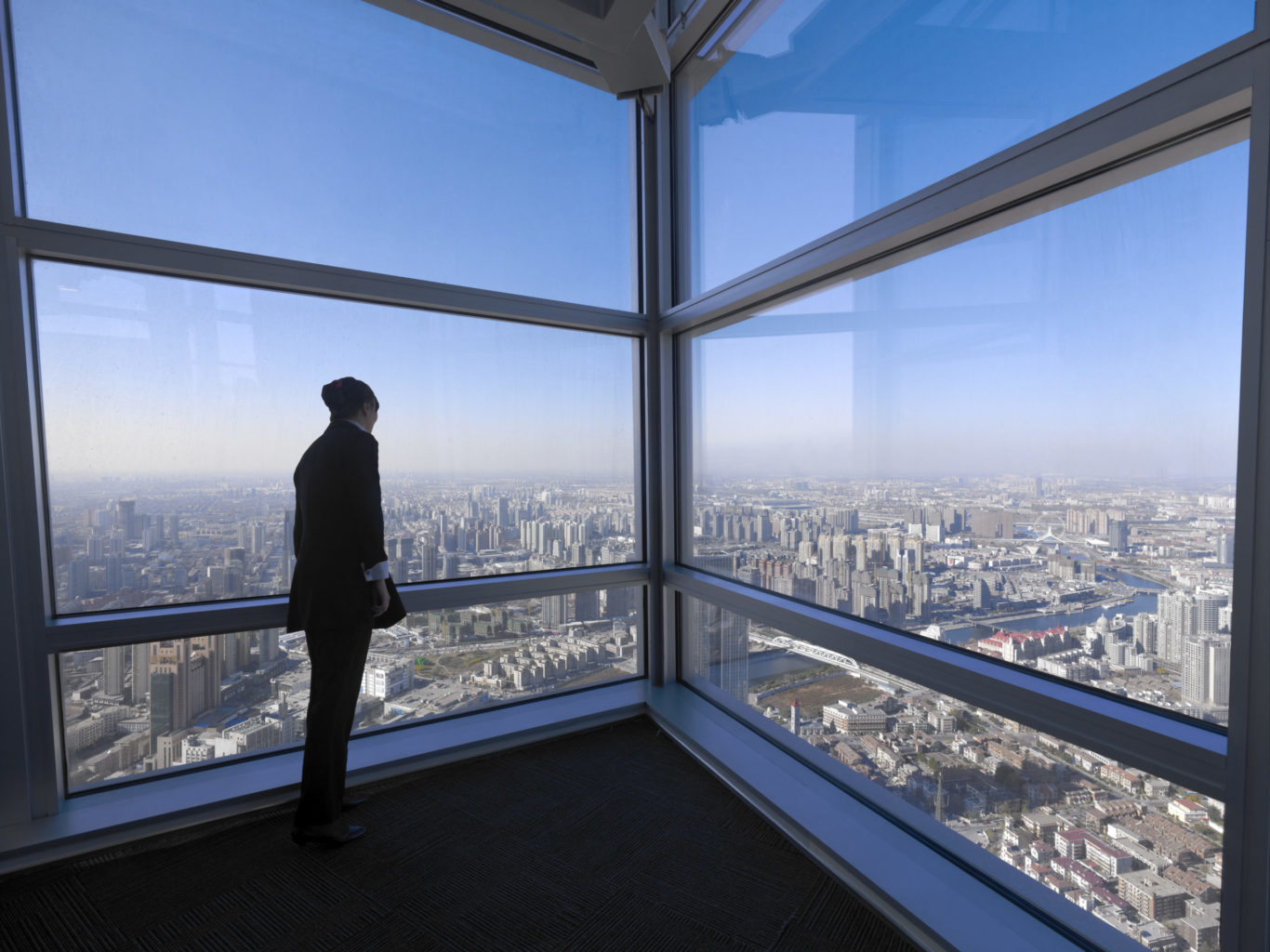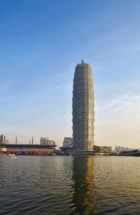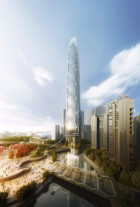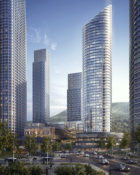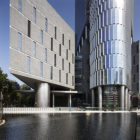A symbol for Tianjin
Located in the historic heart of Tianjin, the Global Financial Center embodies the city’s international prominence as a gateway to China. Across the Hai River from the city’s high-speed rail and transit hub, the 337-meter tower provides a point of reference at the city center. The Center contains 240,000 square meters of office space, while an observation deck and sky restaurant provide 360-degree views above the city. At its base, a public garden establishes a formal entrance overlooking the Hai River.
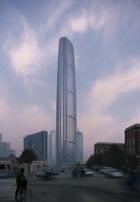
The tower’s architectural expression combines the strength of a minimal form with an elegance of material and detail. The architectural concept of entasis — the curve given to a tapering column — influenced the tower’s curving shape.
Clad in a pleated glass exterior wall that recalls the structure and lightness of Chinese paper arts, the tower catches light and maximizes views. The pleated facade creates generous bay windows and allows the exterior unitized wall system to track the gently tapering geometry. These bay windows increase the amount of daylighting that penetrates the office space, while shading adjacent areas.
A symbol for Tianjin
Deep dive: Structural engineering
The tower’s unconventional design required the development of a highly innovative structural system. It incorporates steel plate shear walls, adapting the use of modern shipbuilding technologies to benefit from local knowledge and supports local skilled labor. Tianjin serves as North China’s leading center for the shipbuilding industry, which involves the manufacture and fabrication of steel plates on a large scale.
The tapered supertall tower features a remarkably high slenderness ratio in a region with high wind loads. Resisting imposed gravity and lateral loads, the columns of the tower consist of concrete-filled tubes: large diameter pipes fabricated from steel plates that are filled with high strength concrete, which result in minimum dimensions for the columns to resist vertical loads. The use of steel plate shear walls on the tower results in a steel material savings of 20 to 25 percent over more conventional structural steel systems.

